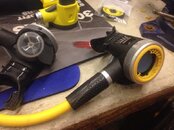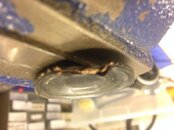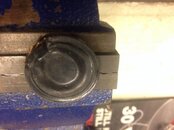Purge covers fail all the time, mostly from dryrot as seen in this octo. Also something heavy was dropped on the primary cracking the exhaust tee clean off.
The other photos are more interesting- this was a first stage diaphragm from a edge brand regulator that failed catastrophically. Happened after pressurization for the first time after a period of inactivity.
Ive also seen plenty of these cheap Chinese valves come in with broken valve stems and frozen bonnets. Found stress cracks in more then a few plastic conshelf second stages and one slime line octo from oceanic
The other photos are more interesting- this was a first stage diaphragm from a edge brand regulator that failed catastrophically. Happened after pressurization for the first time after a period of inactivity.
Ive also seen plenty of these cheap Chinese valves come in with broken valve stems and frozen bonnets. Found stress cracks in more then a few plastic conshelf second stages and one slime line octo from oceanic







